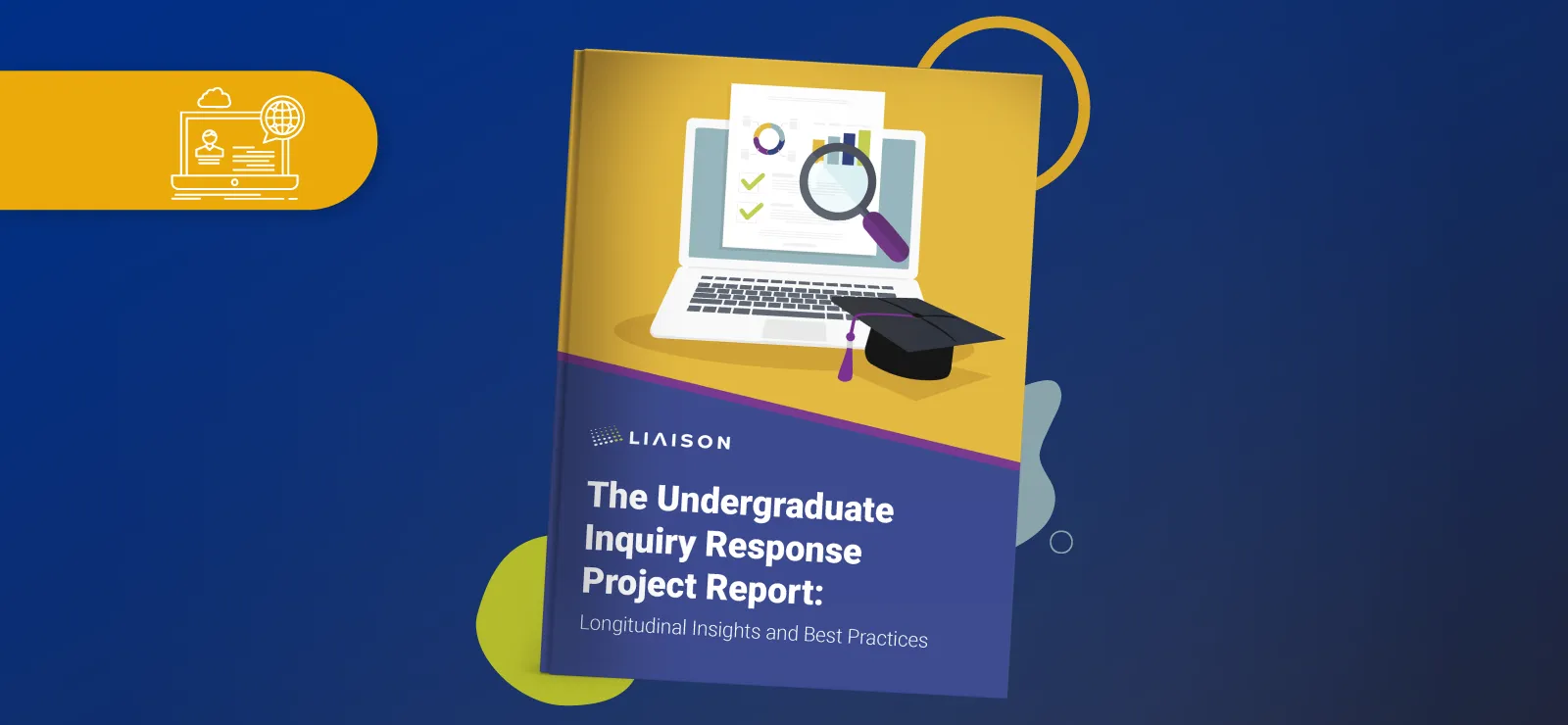Are Your Inquiry Responses Helping or Hurting Enrollment?

How your institution responds to student inquiries can determine whether potential applicants continue their journey with you or with someone else.
Key Takeaways
Over half of undergrad students enroll at the first institution that responds to their inquiry.
Institutions with visible, easy-to-use inquiry forms and rapid replies set themselves apart.
Communications that reflect students’ interests and goals resonate more than generic responses.
An omnichannel approach creates a stronger, more consistent enrollment journey.
The first touchpoint between a prospective applicant and a college or university often determines whether a conversation begins or ends. That fact, and its strategic implications for enrollment-related initiatives, was the focus of Liaison’s recent webinar, Are Your Inquiry Responses Helping or Hurting Your Enrollment? What Students Really Expect When They Reach Out.
The session, now available to watch on-demand, unpacked insights from our Undergraduate Inquiry Response Project, a multi-year research initiative capturing how undergraduate schools actually respond to student inquiries. The findings? Early interactions shape student perceptions more than many institutions realize. When every lead and every relationship matters, those first 24 hours can make all the difference.
Why Inquiry Responses Matter
Prospective students are inundated with choices and communications. Yet what stood out in our research is simple: Students notice and act on responsiveness. Institutions can invest heavily in lead generation, but without effective follow-up, much of that investment is lost.
Liaison VP of Enrollment Strategy Craig Cornell, AVP of Enrollment Solutions Erin Stine, and AVP of Enrollment Marketing Account Manager Mollie Ballaro led the session, sharing both the data and stories behind the trends.
Throughout the session, one theme was clear: Inquiry response isn’t just about filling out a form, it’s about building momentum from the very first click.
Availability: Opening the Front Door
One surprising finding was that 25% of institutions don’t have a visible inquiry form on their homepage. Students expect to connect quickly, and if they can’t, many will move on. Think of your request-for-information (RFI) form as the digital front door to your institution. If it’s hidden, clunky, or overly complicated, you risk losing students before the relationship even begins.
As Ballaro explained, “If a student can’t find your form in the first ten seconds, you’re no longer top of mind.” An easy-to-complete form sends the message: We see you and we want to hear from you.
Speed: Responding While Interest Is High
The panel emphasized that speed is everything. Case in point: 52% of prospective students enroll at the first institution that responds to them. That means schools can’t afford to let inquiries linger in an inbox. The new best practice? Automated acknowledgements followed by quick, personalized outreach.
But it’s not just about being fast, it’s also being human. A traditional email may “check the box,” but it doesn’t connect with students. They want to feel recognized, not processed.
Relevance: Making It Personal
Students now expect messages that reflect their academic or career interests, and they can immediately tell the difference between a generic communication and a meaningful connection.
As Stine shared, personalization is more than just inserting a name. It’s about demonstrating that your institution understands who students are and what they care about. Relevance transforms outreach from background noise into a moment of engagement.
Omnichannel Engagement: Meeting Students Where They Are
Relying on emails alone also results in missing opportunities. Schools using multiple channels— including print, digital ads, well-timed texts, and more—see stronger conversion rates. Each touchpoint reinforces the others, keeping your institution top of mind.
As Ballaro said during the discussion, “Students expect speed, but they also crave authenticity. Balancing automation with human-centered engagement separates schools that simply respond from those that build relationships.”
Why Right Now Is The Right Time
Affordability pressures, international enrollment challenges, and growing competition all shape how students search for colleges. In today’s environment, every inquiry represents a student ready to connect. How your institution responds in that moment can determine whether potential applicants continue their journey with you or with someone else.
The insights shared in this session are just the beginning. For a deeper dive into the data, real-world examples, and actionable best practices, watch Are Your Inquiry Responses Helping or Hurting Your Enrollment? What Students Really Expect When They Reach Out now available on demand.
Your future students are already reaching out. Make sure your responses help them move forward.












